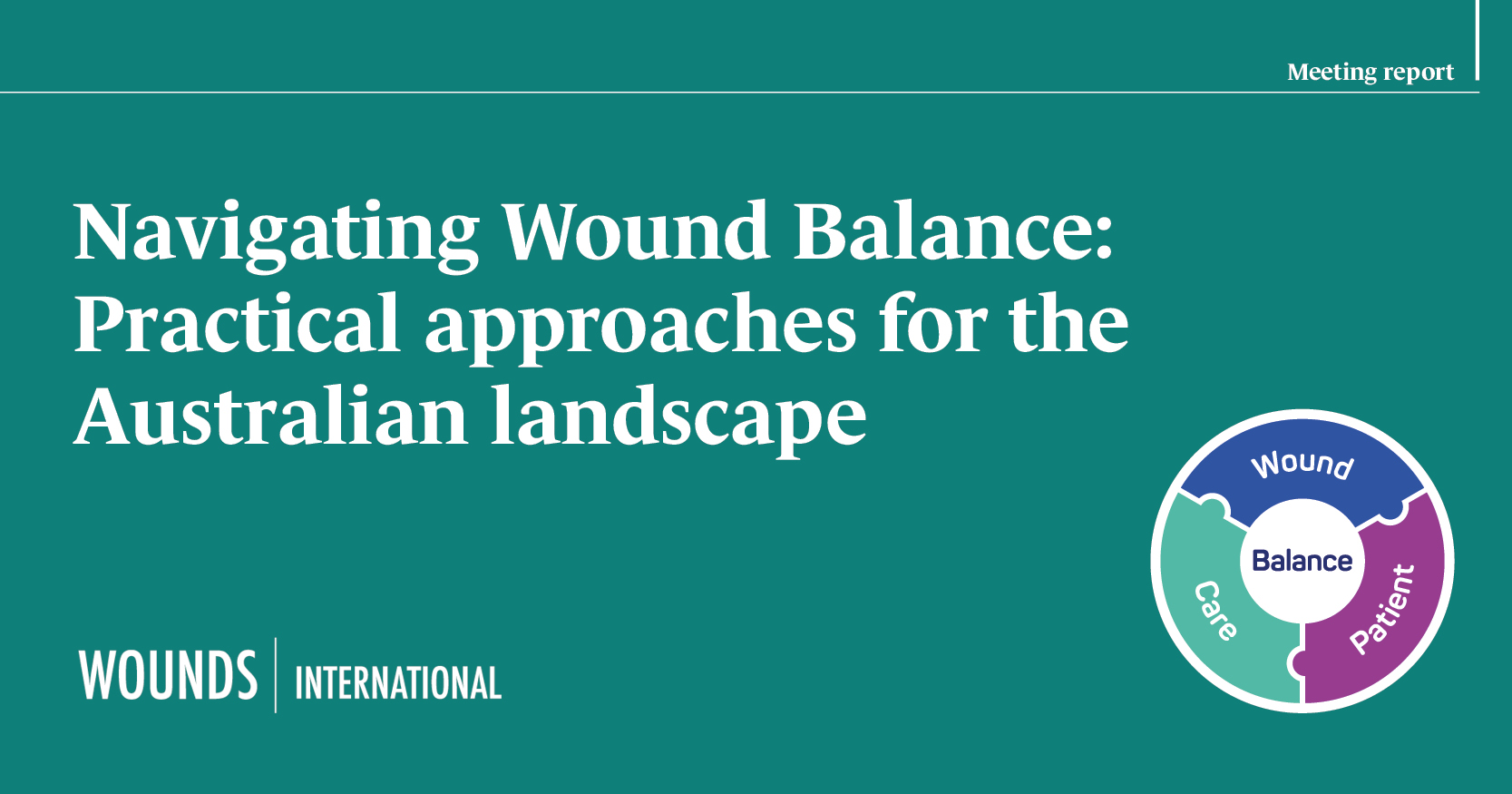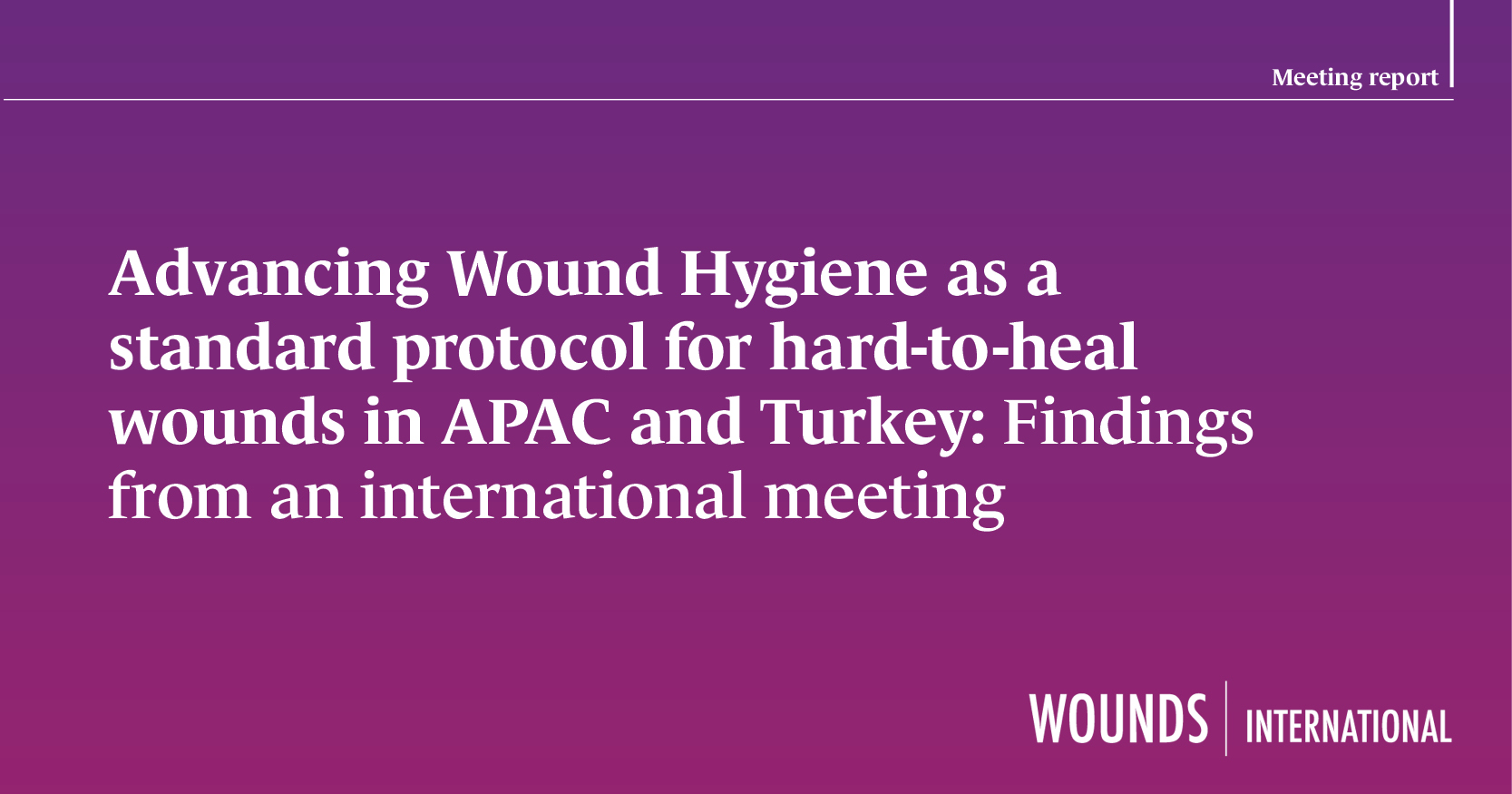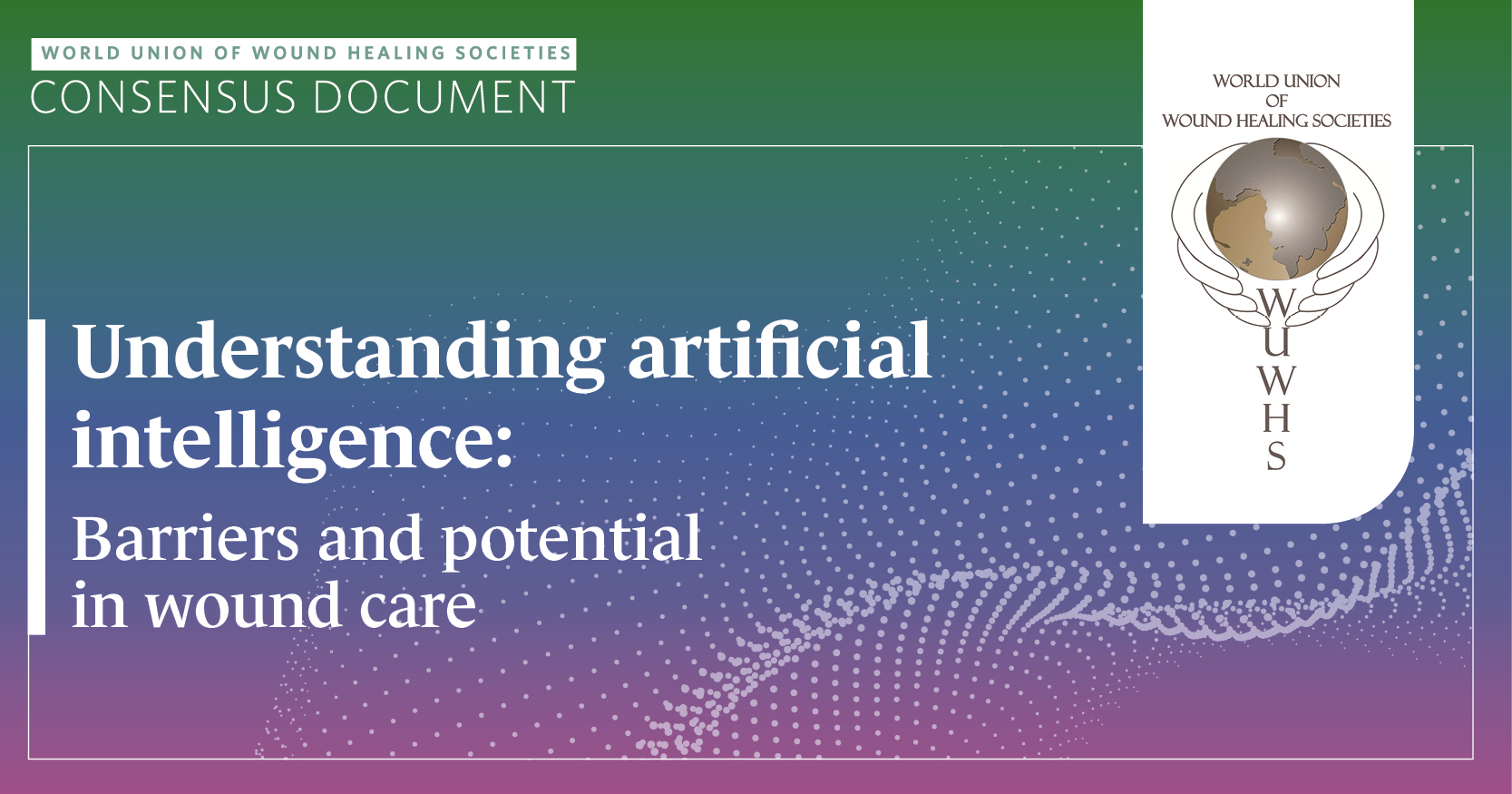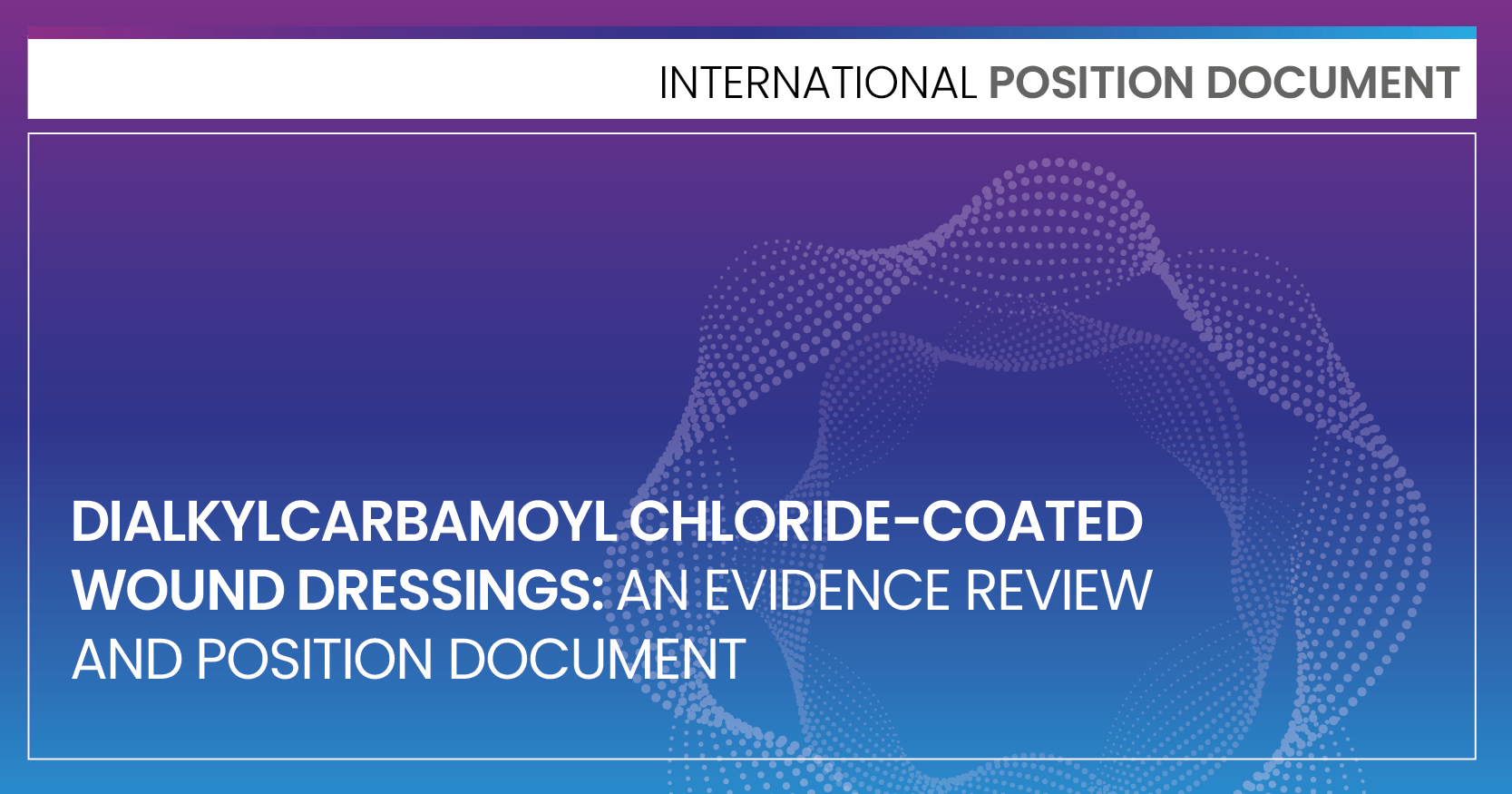What is Wound Balance and why is it important?
What are the barriers to achieving Wound Balance?
The term ‘Wound Balance’ was originally introduced by a panel of wound management experts in 2023 (Wounds International, 2023), providing a multifactorial wound assessment and management approach that can be tailored in a timely manner to individual needs across different clinical settings. This approach consisted of three pillars, based on the factors that influence wound healing – patient, wound and care [Figure 1]. Wound Balance aims to equip HCPs with an informed approach and practical strategies for managing non-healing wounds that have the potential to heal. However, Wound Balance is equally relevant in addressing wound care imbalances for individuals living with palliative wounds, ensuring tailored and compassionate care.
The Australian group adapted and adopted the following statement from the original white paper introducing the Wound Balance concept (2023): The concept of ‘Wound Balance’ is multifactorial, encompassing interconnecting considerations related to wound healing and clinical practice. The Wound Balance concept aims to integrate various critical parameters which offer continuity, individualised care and support clinical decision-making, to place the patient at the centre of all care.’ (Wounds International, 2023).
An Australian perspective was proposed by the expert group, expanding the core elements of Wound Balance – the art of person-centric balance, the science of wound and skin balance and the practice of clinical care balance [Table 1]. The Advisory Board members strongly recommend that the message ‘Healing starts with me’ must be emphasised. Any HCP responsible for performing wound dressing procedures must recognise that every interaction and intervention carries the potential to impact healing, either positively or negatively. A HCP’s attitude, patient communication skills and therapeutic relationships—alongside clinical knowledge and practice—play a crucial role in influencing wound healing outcomes (Probst et al, 2025a).
In Australia, the barriers or challenges for generalist HCPs in planning and delivering optimal wound care via Wound Balance may include the following:
- Lack of confidence
– This may be related to lack of experience and/or knowledge regarding wound care, wound types, product choices and wound bed preparation
- Lack of understanding of the importance of comprehensive wound care/assessment
– This may be due to a lack of recognition regarding:
- Wound management practices as a critical component of undergraduate curricula or as a distinct specialty within healthcare
- An adequate number of wound care HCPs or specialists to support its integration and advancement
A lack of awareness or interest in continuously updating knowledge and practice, which may stem from HCPs not recognising that every action—or inaction—can significantly affect the outcomes for individuals living with wounds
- Limited understanding of the science and evidence underpinning Wound Balance
– Inadequate knowledge of: 1. the essential components of a person-centric wound care approach, resulting in a failure to meet universal healthcare rights and needs for patients; 2. the need to address imbalance of the wound and skin microenvironment; 3. the consequences of delaying implementation of evidence-informed wound care into practice
- Lack of standardised and consistent wound assessment and management practices
– Not all healthcare facilities in Australia have access to electronic medical records (EMR) and/or standardised wound assessment tools
– Without an accurate diagnosis and early identification of factors that delay healing, provision of tailored therapy and standard of care (SoC) may be delayed, limited or impossible to achieve
– Optimal or appropriate treatments may not be available in all care settings
- Lack of tools for monitoring and documenting patient progress.
More emphasis should be placed on identifying the evidence of delayed or impaired healing and importance of early referrals; to achieve this, it is paramount that HCPs have access to standardised tools for monitoring and documentation. The use of validated QoL or wellbeing Patient Reported Outcomes Measures (PROMS) could be considered by HCPs to better understand the impact of the wound and /or treatment on an individual. To address these challenges, all HCPs should be aware of the factors that may lead to a non-healing wound and how the concept of Wound Balance can help address the barriers to healing.
What prevents wounds from healing?
To understand Wound Balance, it is important for HCPs to understand wound healing physiology and why some wounds transition to non-healing, as well as the impact of imbalance for the patient, wound and care that is delivered and received. A normal wound healing trajectory requires timely occurrence of four consecutive physiological phases: haemostasis, inflammation, proliferation and remodelling (Rodrigues et al 2019; National Library of Medicine [NLM], 2023). However, a large number of patient, wound and care-related factors can impair this normal process, resulting in a non-healing wound that may typically become ‘stalled’ in the inflammatory stage (Wounds International, 2023; Murray et al, 2018). Table 2 summarises the factors that impede wound healing.
Although identifcation of healing barriers, holistic patient and wound assessment and timely, evidence-informed interventions are gold standard approaches for managing non-healing wounds, it can be challenging in everyday practice to balance all factors contributing to non-healing wounds.
Table 3 provides an explanation of these core components in the Australian wound
care context.
Recommendations for adapting Wound Balance to the Australian context
The following section provides practical recommendations from the panel to assist HCPs align their care goals with each pillar or element of Wound Balance.
Achieving PATIENT balance: balancing the art
Person-centric assessment, diagnosis and management to improve engagement
The goal of improving patient outcomes lies at the heart of Wound Balance. It is, therefore, important to ensure assessment and management is focused on achieving patient-centric balance.
It is important to remember that, despite best practice interventions, not all wounds may heal quickly, and some may never heal (e.g. palliative wounds). Therefore, at every stage of care, using a person-centric, empathetic approach, HCPs and teams can commit to optimising patient comfort, developing and maintaining therapeutic relationships through effective communication and maintaining patient partnerships and engagement (Probst et al, 2025a; Probst et al, 2025b). The Australian Advisory Board proposed the Wound Balance mantra, ‘Healing starts with me’.
Measurement and monitoring of QoL or wellbeing can be considered an additional ’tool in the tool shed’ for person-centric assessment and management interventions (Janke et al, 2023; Upton et al, 2021). The use of validated wound-specific tools is guided by local policy or protocols and HCP or team judgement, taking into consideration available resources along with patient and setting suitability.
Focus on patient goals
Patient goals may vary significantly over time; it is important that assessment and reviews are undertaken routinely.
It is important to incorporate cultural sensitivity in all patient interactions and communications. A significant number of patient communications may occur as ‘bedside conversations’, for which, HCPs should receive appropriate training
and education
There is a need to provide appropriate patient education materials (e.g. health literacy and cultural requirements)
It is crucial to foster referral pathways for identified patient-related issues, including physical, social and emotional spiritual/cultural needs.
Achieving WOUND and SKINbalance: balancing the science
Wound pathology and biomarkers
For achieving wound care balance, it is crucial to understand the shift in wound pathology (as indicated by both biomarkers and clinical signs and symptoms) at each stage of wound healing. Furthermore, due to the long-term nature of a non-healing wound, it is imperative that HCPs are able to recognise wound infection and chronic inflammation and understand their local referral pathway as well as guidelines for antibiotic prescription (for localised, spreading and/or systemic infections) and antimicrobial stewardship strategies. The panel recommends that HCPs employ the Wound Infection Continuum for identifying signs and symptoms of wound infection (IWII, 2022) and identification and management of non-viable tissue; it is important that HCPs understand the concept of debridement and the importance of an aseptic approach to wound care procedures.
Early identification and intervention
Upon presentation, it is important to identify the wound type and classification, and assess the risk factors related to patient, wound and care imbalance involved in wound chronicity. Recognising healing barriers is essential, as their early identification can help detect wounds at risk of becoming non-healing. Accurate recognition of these factors enables HCPs to identify potential red flags and ensures timely intervention or referral. In Australian care settings, there is a clear need for a standardised approach to wound prevention, assessment, and management, as outlined in the Australian Standards for Wound Prevention and Management (2023).
Based on Wound Balance, consideration of the following factors and recommendations can help HCPs develop a standardised strategy toward early identification and suitable interventions for non-healing wounds:
- Holistic assessment and identifying factors that may delay healing (physical, emotional, social and spiritual/cultural)
- Patient factors
- Comorbidities
- Psychosocial
- QoL or Wellbeing
2. Barriers in identification of wound type and or classification
- If wound type and/or classification
is unclear, HCPs should seek specialist advice aimed at further diagnostic interventions and assessment - If the practice or service is unable to identify and classify the wound type, an appropriate referral should be made to a wound care specialist, or appropriate team member(s)
3. Identification of ‘red flags’ that require referral
- A referral may be ‘emergency’, that is, emergency intervention/care is required due to medical need and life- or limb-threatening
- Alternately, an ‘urgent’ referral may be needed, due to unmanaged or escalating needs such as pain, exposed structures or decreased vascularity
- A referral may be ‘non-urgent’ where further diagnostic assessments are required to ensure tailored/targeted therapy
4. Targeted treatment based on wound type and/or classification
- Wound bed preparation (macro and micro wound environment) and use of validated wound assessment tools, such as TIMERS (Wounds International, 2023)
- Appropriate skin products, dressings or devices for clinical need and patient preferences
- SoC, based on wound type and patient preference
5. Monitoring of healing trajectory and re-assessment on a regular basis
- If the wound is improving, care should be continued
- If the wound is not healing, re-assess for factors delaying healing, or refer to specialist services.
Normalising wound healing trajectory and balancing exudate
The goal of Wound Balance is to minimise factors that hinder wound healing while enhancing those that support recovery in healable wounds. Recognising expected healing trajectories for various wound types is essential—when healing is slow or absent, an investigation into the underlying causes is necessary. In cases of non-healing wounds with healing potential, HCPs must take proactive measures to modify the microenvironment and optimise conditions for recovery. This approach aids clinicians in effectively managing their time, ensuring appropriate allocation for wound dressing procedures, and implementing proactive treatment strategies.
An understanding of healing biomarkers can assist in placing a non-healing wound on a healing trajectory. Recent studies have demonstrated a significant difference in the expression of certain protein biomarkers between healing and non-healing wounds (Stacey et al, 2019; Mikosiński et al, 2022). In a group of patients with highly exuding wounds (venous leg ulcers; n=57), nine healing biomarkers were found to be significantly different between healing versus non-healing wounds (Mikosiński et al, 2022). Furthermore, Mikosiński et al (2022) demonstrated that biomarker profiles may be useful in early identification of patients at risk of developing non-healing wounds.
It is important to assess the type and consistency of exudate, as well as understand the proteolytic enzymes within it (e.g. metalloproteases) that may compromise the integrity of peri-wound skin and damage growth factors and wound substrate. To achieve Wound Balance, HCPs may consider easy-to-use, effective, first-response dressings that can modify the imbalanced microenvironment, balance wound exudate, minimise wound-related pain while reducing skin injury risk via atraumatic removal. Wound dressings containing superabsorbent polymers (SAP) with these characteristics are now available; these dressings can assist in moving the wound toward a healing trajectory (Wounds International, 2023). SAP dressings maintain a moist wound environment, offer high absorbance capacity and reduce wound healing inhibitors, such as matrix metalloproteinase 2 and elastase, and microorganisms (Probst, 2019; Candas et al, 2021; Veličković et al, 2024). The moist wound surface promotes autolytic debridement, further removing dead tissue and debris (Ousey et al, 2016; Choo et al, 2019).
Therefore, SAP dressings can help achieve Wound Balance in most clinical settings by promoting a shift to healing (Wound Balance Wounds International, 2023; WUWHS, 2025).
Achieving CARE balance: balancing the practice
Addressing clinical practice-related challenges
Referral and escalation pathways may vary significantly across different healthcare settings. It is important to ensure that appropriate referral and escalation pathways are in place and HCPs are informed.
The Advisory Board recommends nurturing strong professional networks between generalist HCPs and experts who undertake wound care. This collaborative environment can help optimise resources and promote timely interventions and, therefore, improve patient outcomes.
There is also a need to ensure HCPs can define and differentiate between ‘urgent’, ‘new’ and ‘non-urgent’ referral needs.
Clinical decision-making and practicing continuity of care
Given that non-healing wounds are a long-term condition, it is important to ensure continuity of care using an evidence-informed approach. All generalists HCPs undertaking wound care should be aware of their local referral pathways and wound prevention and management standards and guidelines (e.g. for adjunct therapies/devices/diagnostics). Continuity of care is best achieved through a multidisciplinary approach that includes allied health professionals such as podiatrists, dietitians and physiotherapists. Collaborative teamwork enhances patient outcomes by integrating expertise and holistic care strategies.
Further recommendations were provided by the Advisory Board to highlight the variety of funding/support available for ensuring wound care continuity. Australian government or non-government funding schemes or support services, can be accessed by eligible populations living in the primary health care setting. This may include (but is not limited to):
- My Aged Care services
- Home and Community Care (HCCA), National Disability Insurance Scheme (NDIS), Department of Veterans Affairs (DVA) and Repatriation Pharmaceutical Benefits Scheme (RPBS) or Chronic Wound Consumables Scheme (CWSC 2025).
Realistic time balance in daily practice
The panel recommends achieving time balance by undertaking clear discussions among generalist HCPs to establish specific care goals and expected healing timelines for each patient. These goals should be re-assessed and concerns addressed at each dressing change.
To ensure continuity and timely communication between HCPs (including local and remote team members), thorough clinical documentation can play a crucial role. For example, assessment at each dressing change can be documented, recording wound and skin assessment findings including measurements and photographs to monitor healing progression. Early identification of red flags can trigger wound specialist referral if the wound does not heal in four weeks (Atkin et al, 2019).
The significant gaps in the Australian wound care landscape can be addressed by implementing Wound Balance
Non-healing wounds remain a significant healthcare challenge across the world (AMA, 2022; Sen, 2023; Sharma et al, 2024) and are referred to as a ‘silent epidemic’ by the Australian federal government, peak bodies and professional organisations. Carville et al (2022) found that, with no added costs to the payers, healing for up to 80% of all non-healing wounds may be achieved with implementation of evidence-informed care via contemporary wound care products.
However, the burden of care for non-healing wounds is still high, costing Australia approximately $5.14 billion in 2019 (Queen and Harding, 2023).
The Australian Health Research Alliance (AHRA) underlines the importance of equitable wound care for all patients, regardless of ‘their geographic location, type of wound or healthcare provider (AHRA, 2025). Several Australia-specific cultural and demographic barriers currently exist in providing inclusive and equitable wound care. A recent consensus highlighted the national need to focus research on non-healing wounds, with particular emphasis on managing pain, venous leg ulcers and pressure injuries (Finlayson et al, 2025). Smith et al (2024) demonstrated that integrating wound care data across hospitals and community settings in Australia enhances HCPs’ understanding of associated comorbidities and the diverse outcomes across different wound aetiologies.
Data from older and more vulnerable populations indicate that, in Australia, concurrent use of complementary medicines with prescription treatments has not changed in the last few years and presents a significant safety concern (Harnett et al, 2023).
Furthermore, for certain patient groups (e.g. First Nation populations), clinicians may require assistance from or collaboration with traditional healers. The impact of rural/semi-rural living on access to wound care facilities is also significant.
These data highlight an unmet need in Australia to implement evidence-informed wound care practices, tailored to addressing the local needs (McCosker et al, 2018; Pacella et al, 2022). In summary, these barriers impact patients’ access to evidence-based wound care, likely leading to sub-optimal outcomes.
The concept of Wound Balance provides a holistic, tailorable approach that generalist HCPs in Australia require for improving healing outcomes for their patients and reducing long-term wound care costs.
Conclusions and future recommendations
This publication highlights the role that Wound Balance can play in addressing the unmet wound care needs in Australia by empowering both the generalist HCPs and specialists in wound care. Furthermore, the recommendations from the Advisory Board on each pillar of Wound Balance provide a foundation upon which future wound care education programmes can be developed for generalist HCPs and a sustainable improvement achieved.
With an ageing population and the projected rise in the prevalence of non-healing wounds in Australia (AHRA, 2025), there is a significant need to educate HCPs about the Wound Balance concept for prompt implementation of evidence-informed wound care strategies. Wound Balance can help create a roadmap for Australian educators and HCPs in providing equitable, evidence-informed care–with patient, wound and care balance for all.
Further reading: The 2nd Australian Advisory Board met on 7th March 2025 and, since this meeting, a global consensus on Wound Balance has been published (WUWHS, 2025).





